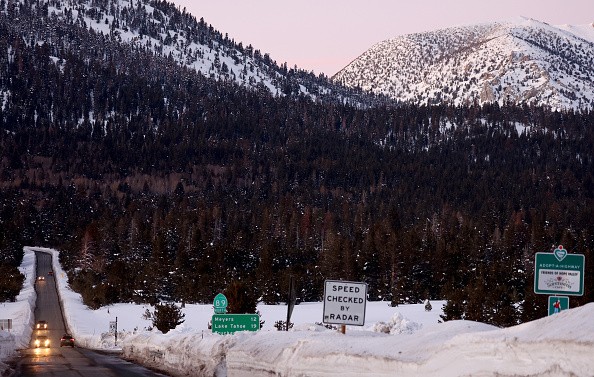A winter storm that dumped a lot of snow on the interior Northeast late on Sunday and Monday caused hazardous driving conditions that resulted in at least two fatalities as the last week of January started.
In addition, the storm caused thousands of people to lose electricity and prompted school cancellations from Maine to New York.

Deadly Snowstorm
A Massachusetts man, age 31, was killed in a wrong-way collision on Interstate 290 Sunday night at about 9 p.m. local time in Worcester, Massachusetts.
Before state police verified the death, the Massachusetts Department of Transportation described the multiple-car collision as having "severe injuries."
After Beatrice J. Batista, 25, of Central Falls, Rhode Island, lost her life in an accident on Interstate 95 north, another death was reported in West Warwick, Rhode Island, according to NBC10 Boston.
According to a witness, Batista lost control of the car as it moved in the right lane, departing into the shoulder, rolling over, and colliding with a tree.
According to the station, Batista was declared deceased at the site.
It was unknown whether the weather had a role in the deaths of two additional people killed in collisions, one in Fairhaven, Massachusetts, on Sunday night and the other in Acton, Massachusetts, on Monday afternoon.
The New Hampshire State Police said that since Monday at 5 a.m. local time, troopers have attended to 90 collisions and automobiles off the road.
Making Travel Harder
Due to the snow, ice-related dangerous driving conditions and patchy visibility, the Interstate speed limit was reduced to 45 mph across New Hampshire, as per AccuWeather.
Drivers driving too fast for road conditions is causing people to crash and slide off the road. Drivers need to slow down and use caution if they must drive. https://t.co/IRTwbs2IDS
— Maine State Police (@MEStatePolice) January 23, 2023
The New Hampshire State Police said on Twitter, "Leave yourself additional travel time to get to your destination this morning and clean the snow and ice from your car before driving."
Just before 9 a.m. EST on Monday, the Maine State Police reported a rise to 29 collisions and cars off the road in Maine.
The Maine State Police said on Twitter that "drivers driving too quickly for the conditions is causing individuals to crash and slide off the road." If they must drive, drivers ought to slow down and be careful.
As a precaution, Sunday night,f a 45 mph speed limit was implemented for a portion of Interstate 95 in Maine.
Additionally, the Massachusetts State Police implemented a speed limit on sections of Interstate 90.
On Monday morning, at least 528 pieces of snow removal equipmen twere spread out around the state by the Massachusetts Department of Transportation (MassDOT).
In some areas of the Northeast, the snowfall had surpassed one foot by Monday afternoon. 14.5 inches of snow fell at Etna, Maine, a village west of Bangor. About two hours north of Boston, in Meredith, New Hampshire, 14.5 inches of snow fell on Monday afternoon.
Other Northeastern states that received snow were Pennsylvania, Massachusetts (7 inches in the city of North Adams), Connecticut (8 inches in the town of Bakerville), and Massachusetts (5 inches in Lawrenceville Township in north-central Pennsylvania).
Power Outage
By Monday afternoon, the number of power outages in Massachusetts, New Hampshire, and Maine had reached the tens of thousands due to the dense, wet snow that blanketed the interior Northeast and weighted down tree branches and power lines. According to PowerOutage.US, 120,000 consumers were without electricity on Tuesday morning.
Several school districts in the Northeast shuttered for the day on Monday as snow fell during the morning commute. According to the Boston Globe, Massachusetts saw almost 20 school districts shut for a snow day.
While some schools in New York canceled for the day, many others started on a "two-hour delay." Due to the bad weather, numerous institutions in Albany, New York, chose to have all courses take place remotely rather than canceling them on Monday, according to WNYT.
Universities are just some of the institutions that choose to hold remote courses when it's stormy outside. During the pandemic, virtual learning gained traction, leading some instructors to conclude that snow days are no longer essential.
Related Article : Exposure to Major Disasters Can Cause Long-Term Mental Health Problems
For more climate and weather updates, don't forget to follow Nature World News!
© 2025 NatureWorldNews.com All rights reserved. Do not reproduce without permission.





